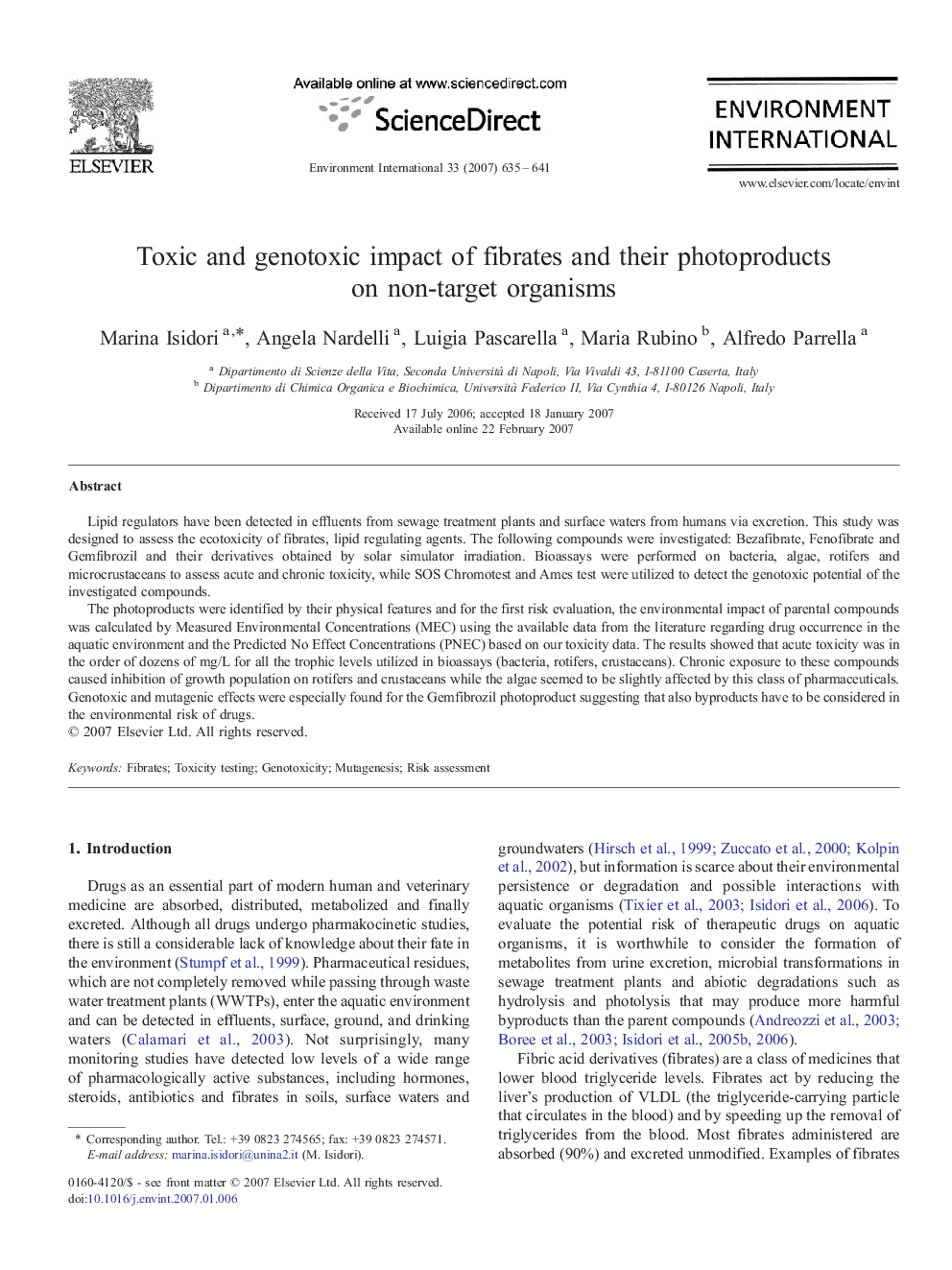| Article ID | Journal | Published Year | Pages | File Type |
|---|---|---|---|---|
| 4423904 | Environment International | 2007 | 7 Pages |
Lipid regulators have been detected in effluents from sewage treatment plants and surface waters from humans via excretion. This study was designed to assess the ecotoxicity of fibrates, lipid regulating agents. The following compounds were investigated: Bezafibrate, Fenofibrate and Gemfibrozil and their derivatives obtained by solar simulator irradiation. Bioassays were performed on bacteria, algae, rotifers and microcrustaceans to assess acute and chronic toxicity, while SOS Chromotest and Ames test were utilized to detect the genotoxic potential of the investigated compounds.The photoproducts were identified by their physical features and for the first risk evaluation, the environmental impact of parental compounds was calculated by Measured Environmental Concentrations (MEC) using the available data from the literature regarding drug occurrence in the aquatic environment and the Predicted No Effect Concentrations (PNEC) based on our toxicity data. The results showed that acute toxicity was in the order of dozens of mg/L for all the trophic levels utilized in bioassays (bacteria, rotifers, crustaceans). Chronic exposure to these compounds caused inhibition of growth population on rotifers and crustaceans while the algae seemed to be slightly affected by this class of pharmaceuticals. Genotoxic and mutagenic effects were especially found for the Gemfibrozil photoproduct suggesting that also byproducts have to be considered in the environmental risk of drugs.
